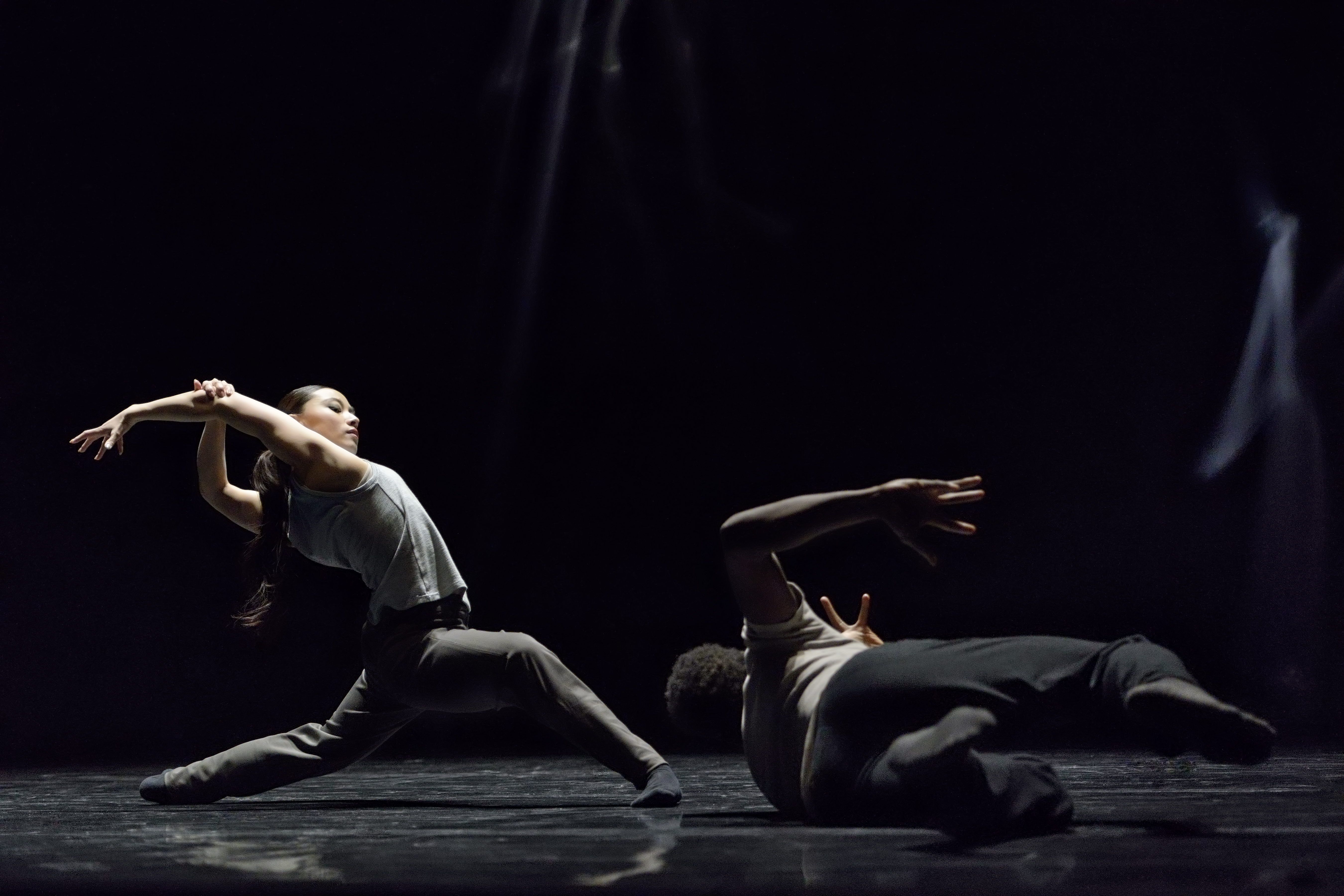Words by Angel Dust.
As the dance show starts, I begin to question whether I am watching a dance show. I think to myself: ‘It might be a play or it might be physical theatre, or what if it is a movie in the making?’ It certainly had a cinematic edge which defied any pre-show imaginations I had in my head.
The Revisor is a contemporary revision of the original 1836 play, – The Government Inspector, by Russian dramatist Nikolai Gogol – and a continuation of a growing artistic relationship between choreographer Crystal Pite and playwright Jonathan Young, who have in the past successfully combined words and dance to a great effect. Gogol’s play originally came in five acts, and explored corruption and bureaucracy in 19th century Russia. But this one, performed by Kidd Pivot company, is in a way split into two parts.
The first part is more reliant on words, and resembles the play in its farcical demeanour and narrative style. The opening image on stage is that of an empty office with a narrator’s voice describing it, while the ceiling light flickers responsively to the voice. As the characters start barging onto the stage and we are introduced to their predicament (an incognito government inspector named Khlestakov is to arrive in their town) a very fascinating play between sound and movement takes place. The voices have all been pre-recorded before the choreography was made, so that the dancers have been rehearsing and synchronising their moves to the sound in a very rhythmically precise way with a disorienting effect.
Despite the simultaneousness of sound and motion, there is also a delay or a semi-autonomy of movement that is hard to explain; originating in a sphere separate from the one the bodies inhabit. It is this delay and semi-autonomy which exaggerates the idiosyncrasies of the characters and turns them into caricatures that are falling in a deeper and deeper state of disquiet because they know they might get punished for their amorality. The first part could be summarised as an amplified dance of the subtle.
In the second part or the deconstruction phase, we are taken into a more abstracted dimension that explores the same events as the first part but through a more existential lens, focusing more on the physicality of the bodies rather than their words and explanations. Lighting design and obsessive repetition create the sense that the movement emerges from a dark, unknown and unfathomable place or force. The narrator’s voice implies the whole thing is a simulation and that the characters do not necessarily have full authority over their actions.
This relation is further complicated when the audience is brought into the formula; we are passive observers of a farce that have no intention to attempt and change what is happening on stage. Thus this abstracted phase presents the possibility for redemption in that we (humans) are at the mercy of a highly complex metaphysical sphere beyond our control. Perhaps Khlestakov is absorbed back into the same system of corruption that he had risen from without facing any consequences. But the most important question we are posed with is from the mayor’s wife Anna when she is ravishingly flirting with Khlestakov. Out of her mind, she asks “Who am I? Where am I? What is this?” A nice set of questions to think about over breakfast, at work or in the theatre while watching a show.
Header image: Michael Slobodian.
